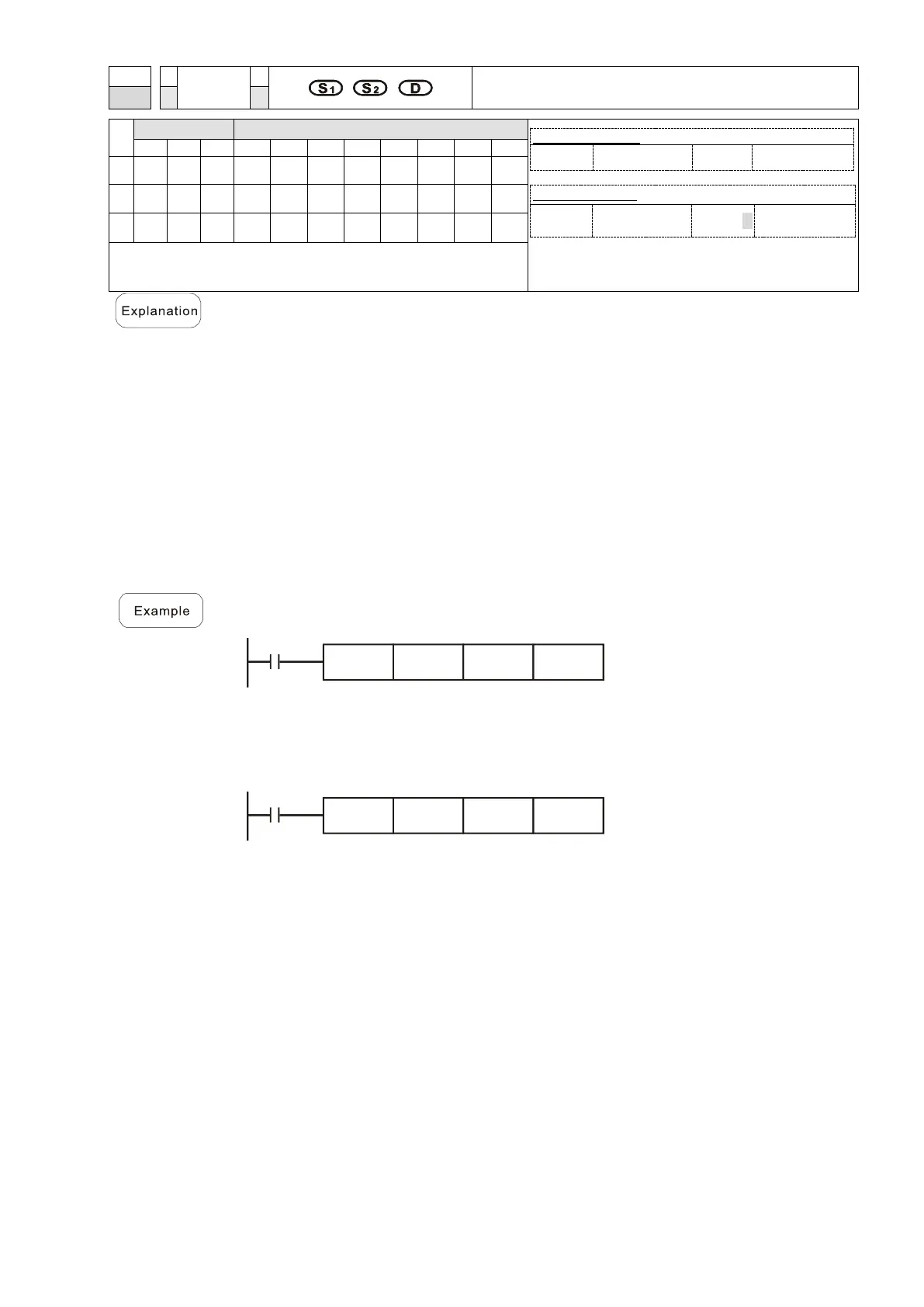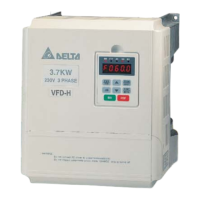S
1
: multiplicand. S
2
: multiplier. D: product.
Multiplies the content of the register designated by S
1
by the content of the
register designated by S
2
, and stores the product in the register designated by
D; multiplication is performed entirely using binary floating point numbers.
If the source operand S
1
or S
2
designates a constant K or H, the command
converts that constant into a binary floating point number for use in
multiplication.
In the situation when S
1
and S
2
designate identical register numbers, if you
employ a "continuous execution" command, when conditional contact is ON, the
register performs multiplication once during each scan. You generally use pulse
execution type commands (DEMULP) under ordinary circumstances.
When X1 = ON, multiplies the binary floating point number (D1, D0) by the
binary floating point number (D11, D10), and stores the product in the register
designated by (D21, D20).
When X2 = ON, multiplies the binary floating point number (D1, D0) by K1234
(which is automatically converted to a binary floating point number), and stores
the results in (D11, D10).

